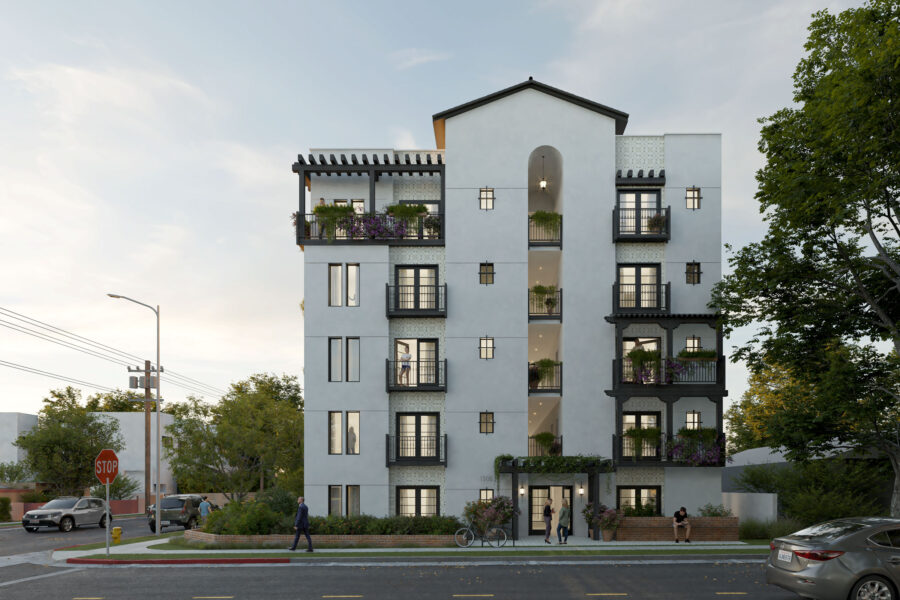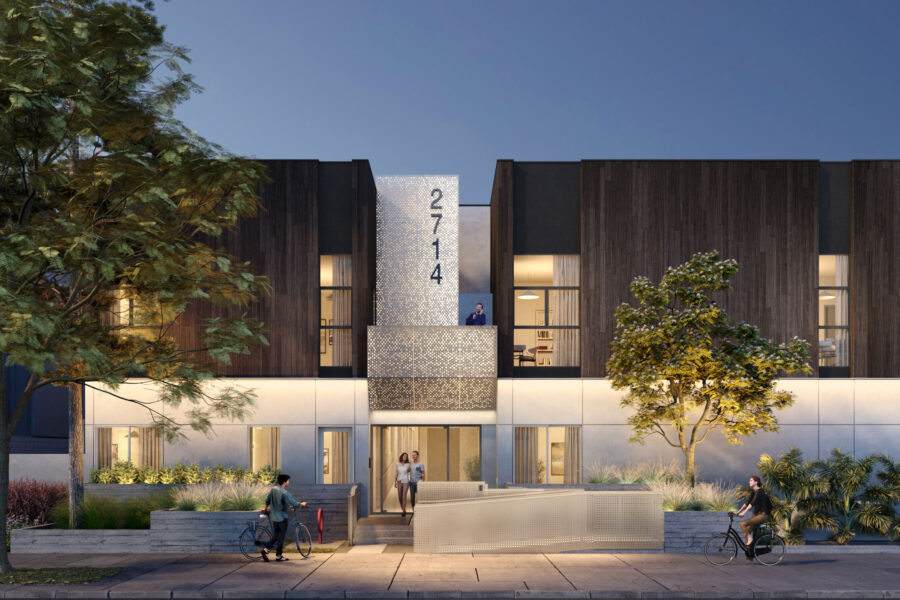Story at a glance:
- JZA’s Jeff Zbikowski shares the benefits of walkable design in communities across the US.
- JZA specializes in the dense, walkable projects that aim to ease the affordability crunch in cities across the US.
- Other benefits of walkable design include reduced CO2 emissions from fewer car trips and health benefits from residents walking and biking more frequently.
Across the US two separate but related trends are coming to define the current housing market. On one hand an affordability crisis is putting homeownership out of reach for many. On the other both home buyers and renters are gravitating toward more walkable communities, where daily amenities and necessities can be reached without a car.
For architects like JZA Architecture principal and founder Jeff Zbikowski, specializing in designing affordable and walkable communities, the two go hand-in-hand. That’s because the rise in popularity of denser housing developments that forego onsite parking is helping to alleviate a housing shortage that has driven up costs from coast to coast.
“Eliminating cars typically frees up ground floor space for retail and eliminates basement parking, which reduces the cost of construction and allows developers to provide more dense housing,” Zbikowski says. “That increases supply and further drives down the costs of those units, creating a more affordable community.”
A number of factors have made walkable design increasingly popular, especially among young professionals in major cities. The rise of remote work and post-pandemic desire for socialization has had a large impact.
“People really value living in a community where they don’t need to drive to work. They’re biking, taking transit, and walking around,” Zbikowski says. “If you’re not spending 45 minutes a day each way going to the office, you have so much more time to go out and live in your community.”

Strong walkability design in a multifamily project like Beta Apartments may include reducing or eliminating parking, freeing up space for pedestrians. Rendering courtesy of JZA Architecture
But as Millennials age and struggle to purchase a home as previous generations have, the affordability that walkable design offers is critically important.
Few areas have experienced the nationwide affordability crunch like cities such as Los Angeles. But over the last year conditions have begun to change—dramatically—with a new California state law. “This year it turned into the wild west with these affordable, walkable projects,” Zbikowski says. “Developers are building crazy density right now.”
In January 2023 California eliminated parking minimums within a half-mile of transit stops. That law complements a 2014 LA transit oriented development (TOD) ordinance that allows greater density the closer a development is to transit. This, along with increased affordability bonuses and reductions in red tape, has led to a boom in walkable, affordable development.
“Last year we had 600 units under contract. This year that’s up to 4,000 affordable housing units under contract,” Zbikowski says, despite rising interest rates. “The vision for the future is to continue on this trajectory, bringing identity to each project, being respectful of local contexts, and promoting walkability.”

Other benefits of walkable design include reduced CO2 emissions from fewer car trips and health benefits from residents walking and biking more frequently, like from these Cherokee Avenue Apartments. Rendering courtesy of JZA Architecture
JZA’s Cherokee Ave. Apartments in Hollywood is one such development that benefited from these zoning changes. One of Zbikowski’s first projects when he founded the firm back in 2017, Cherokee Ave. is emblematic of the many roadblocks that slowed dense, walkable projects under the former development regime.
Initially planned as a 12-unit apartment building, Zbikowski was then tasked with redesigning the project into 18 units before opposition to the increased density sent the unit count back down to 12, and then from an apartment building to a small-lot subdivision. With the changes in state law, Zbikowski and the developer were able to bypass the traditional review process and were approved for a 53-unit, five-story affordable development.
“We were able to convince city planners that we’re on a busy street and should be able to build higher density, taller, and still create something that’s tasteful,” Zbikowski says. “Now you have affordable housing, density, and it’s in an area where you can walk to retail and grocery stores.”
Though taller and denser than its immediate neighbors, city officials agreed the Spanish Revival design with a modern twist fit well into the neighborhood context. Construction is expected to start in late 2023.
And while affordability is top of mind for many, it’s hardly the only advantage of designing walkable communities. Additional benefits range from fostering social interactions among neighbors and enhancing a sense of place within communities to the climate benefits of fewer cars on the roads and the health benefits of walking and biking.
That’s one of the key approaches Zbikowski takes to designing walkable projects. “We typically like to oversize our bicycle parking while reducing car parking,” he says, and adding space for larger, rentable cargo bikes gives residents another way to get to the grocery store without a car.

JZA Architecture says dense, walkable projects like the Beta Apartments aim to ease the affordability crunch in cities across the US. Rendering courtesy of JZA Architecture
At the under-construction Beta Apartments near the University of Southern California campus, JZA planned a large space for bicycles given the area’s walkability and the transportation needs of students—who tend to get around without a car. “Designing walkable projects is very site-specific,” Zbikowski says. “You can’t just place a 100-unit building with no parking anywhere.”
Though LA has long been infamous for its car-centric design and urban sprawl, the city may look quite different a decade from now as these types of dense, walkable, and affordable projects continue to proliferate. “Creating these smaller community-centric developments will be a catalyst to create more walkability in these neighborhoods,” Zbikowski says. “The demand is certainly there.”





